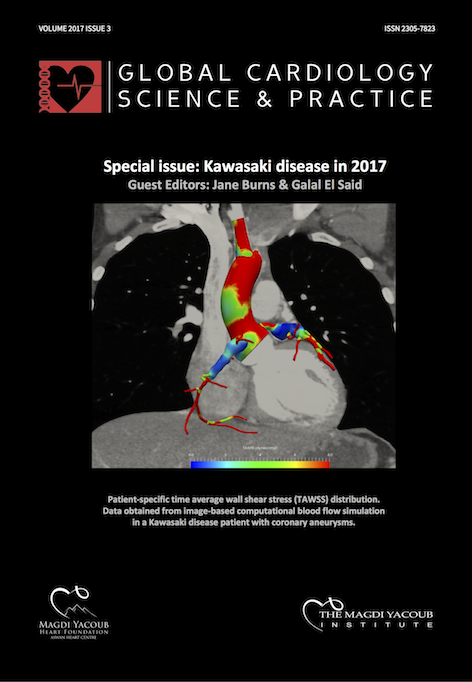Computational blood flow simulations in Kawasaki disease patients: Insight into coronary artery aneurysm hemodynamics
DOI:
https://doi.org/10.21542/gcsp.2017.29Abstract
[first paragraph of article]
Coronary artery aneurysms (CAA) as a result of Kawasaki disease (KD) create abnormal flow conditions that can ultimately lead to thrombosis, with associated risks of myocardial infarction and sudden death. The primary long-term clinical decision required for KD patients with aneurysms is whether to treat with anticoagulation therapy. Current clinical guidelines recommend CAA diameter 8 mm or Z-score >10 as the criterion for initiating systemic anticoagulation therapy. In general, these aneurysms cause regions of flow stagnation, but the complexity of their geometry including changes in diameter, tortuosity and even proximal and distal stenoses make it difficult to evaluate thrombotic risk and predict patient outcomes based solely on a single anatomical measurement taken from image data, usually the maximum aneurysm diameter.
Downloads
Published
Issue
Section
License
This is an open access article distributed under the terms of the Creative Commons Attribution license CC BY 4.0, which permits unrestricted use, distribution and reproduction in any medium, provided the original work is properly cited.


